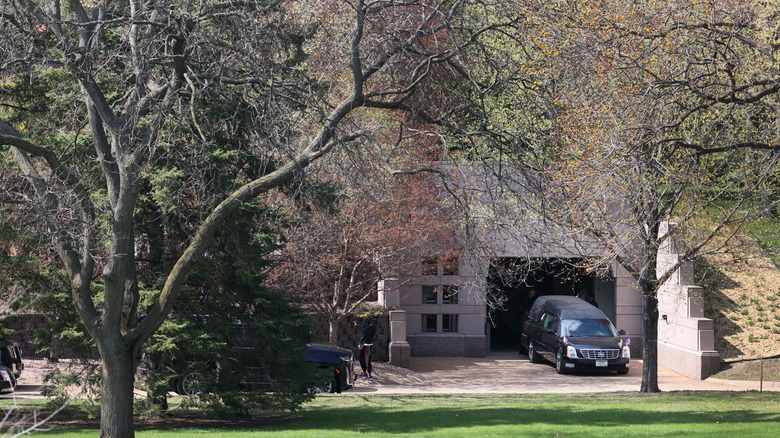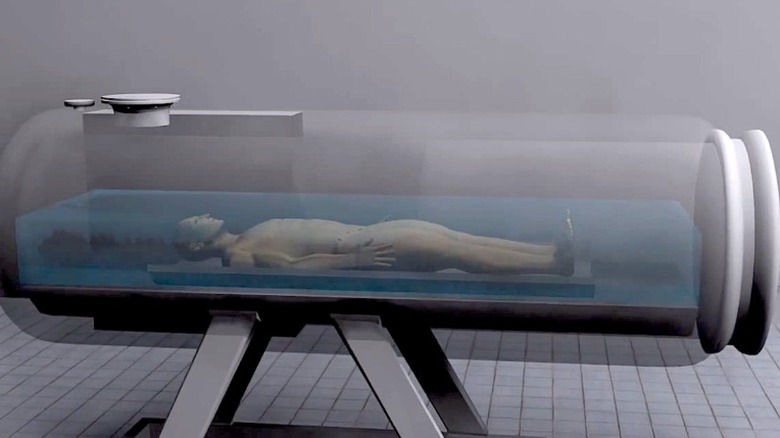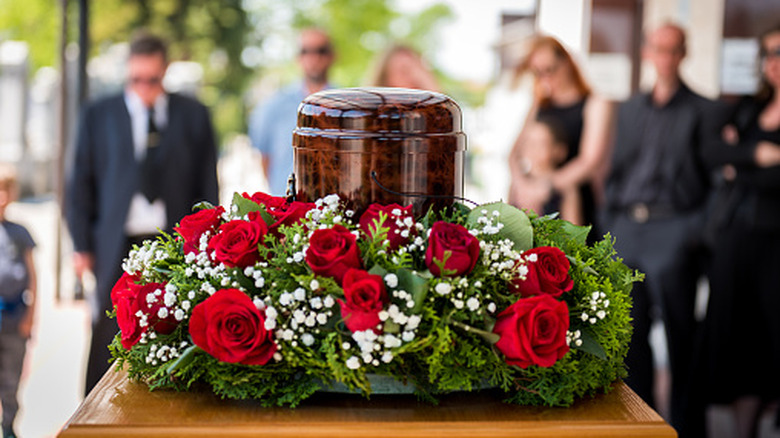Minnesota Was The First State To Legalize This Unusual Type Of Cremation
In the United States, World Population Review estimates that 352 people die an hour. That's 8,460 people every day. The bodies never stop coming, and the living are tasked with disposing of them in a respectful way. For those in the business of interring bodies, options are relatively limited. Typically, we bury or burn corpses via cremation, but just as you can "bury" a person in an above-ground mausoleum, you can also cremate a body using a water solution and heat.
This alternative method of cremation is called "aquamation" or alkaline hydrolysis. It's marketed as a "greener" method of body disposal because it uses 80 to 90% less energy than flame cremation and doesn't emit carbon dioxide, which contributes to climate change. Aquamation is a lesser-known and understood form of cremation, but the end result is the same — all that's left of a body is ground-up bones and teeth. As of January 2025, aquamation was legal in 28 states, but the first one to legalize the option was Minnesota in 2003.
While it was legalized in that state, it took another three years for the first funeral home to bring in the equipment necessary for an aquamation. Though Minnesota led the pack in allowing aquamation, there must not have been any takers, because according to the Cremation Association of North America (CANA), it was 2011 when the first funeral homes used the method in Florida and Ohio. In the subsequent years, it has continued to be a slow-growing choice of body disposal in the U.S.
'It's like an unbirthing'
Aquamation was first patented in 1888, but its initial purpose was to break down animal remains into fertilizer. In 1993, Albany Medical College incorporated alkaline hydrolysis to use for its medical cadavers once they had served their purpose. Over the next decade, aquamation became the standard way to dispose of donated bodies at hospitals and medical universities. Then, as mentioned, in 2003, Minnesota became the first state to make it legal for funeral homes to use aquamation to inter human bodies.
It's described as being a sort of sped-up decomposition process — as in, it does what would happen to a body buried in a casket, only way faster. It works by placing a corpse inside of a large metal cylindrical chamber and sealing it shut, then filling it with 95% water and 5% alkaline chemicals like potassium hydroxide or sodium hydroxide. The chamber acts like a pressure cooker, with the water solution reaching 199 to 302 degrees, per CANA. The pressure and heat are often accompanied by a light agitation, all working to gently dissolve the flesh, leaving only bone behind.
"It just flows the water back and forth over the person, back and forth," California funeral director Francisco Rivero told the Santa Cruz Sentinel. "You come in water, you're leaving in water. It's like an unbirthing." Once the flesh is completely gone, the fluid left behind is called "effluent," and believe it or not, it's just a sterile mix of amino acids, peptides, sugar, and salt. There isn't even DNA in the solution, and it's typically released into the wastewater system just like any other liquid.
Aquamation is slowly gaining steam
The time it takes to fully decompose a body using aquamation depends on the size of the body and the equipment, but it can be anywhere from three to 16 hours. Once that's done, the bones are given time to dry out before they're put in the cremulator where they'll be ground down to a powder. Interestingly, the end result of aquamation is 20 to 30% more cremains, as none of the burned material floats away through the stack during the process.
Another difference between aquamation and fire cremation is that pacemakers have been known to explode during the latter process. That's not an issue with aquamation so there's no need to remove them, which can cost extra. Speaking of cost, the price of aquamation is comparable to standard cremation, though it may cost slightly more while still being significantly lower than the price of a full burial.
In 2021, eighteen years since the practice was first legalized in Minnesota, Barbara Kemmis, executive director of CANA, estimates that less than 2,000 out of 2 million cremations were done by aquamation nationwide. But she also clarified that it's picking up steam faster than standard cremation did. "It took a hundred years from the first [flame] cremation in 1876 for the cremation rate to hit 5% in the United States in 1972 and then less than 50 years to hit 50% cremation [in 2016]," she told Smithsonian Magazine. "I don't know what portion of that cremation market alkaline hydrolysis will have, but it's certainly growing faster than flame cremation did in popularity."


